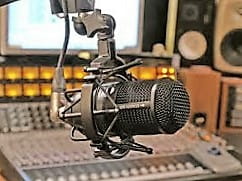_622acccc0e2b0.png)
A hundred years of a sound to see
Under the slogan of Radio Cubana: one hundred years of sound to be seen, a broad program of activities has been planned to celebrate this anniversary of the radio to be celebrated on August 22, 2022.

The history of Cuban radio, about to turn 100 years old, has experienced different stages and transcendental moments in the economic, political, cultural and social development of this nation.
In 1922 a radio amateur, a fighter of the Mambi forces and musician, using a 10-watt transmitter created by his 16 years old son, began to transmit the first radio waves in Havana at that time, a city that was not yet invaded by other sounds. Cubans as courageous for the world of radio as Luis Casa Romero and his son Luisito started what went down in the history of the radio as the 2LC station by the acronym of their names.
Just before nine o´clock at night, Luis Casas Romero father with a trumpet made a chord that remained in the environment as the sound of the tic tac that we hear today on Radio Reloj.
The station 2LC of the Casas Romero family was later known as CMKC and was inaugurated on April 16, 1923.
Later, 2DW, 2AB,2OK, 2BY and other similar stations appeared in the capital, announcing the time, the weather forecast, sports and the latest news. (Pérez,2018,p54)
At the end of 1929, the so-called artisan stage of radio in Cuba came to an end, with the emergence of several radio stations, mainly in the capital. Tis gave way to a new cycle characterized by the appearance of new radio stations and radio programs with commercial destinations.
Between 1930 and 1940 Cuban radio began a new cycle for entertainment, whose commercial purposes were more and more evident as well as the inclusion of many styles and equipment of North American creation.
In 1958 appeared on the dial the station of the Revolution, Radio Rebelde, founded in the mountains of the Sierra Maestra by Ernesto Guevara de la Serna, el Che, on February 24.
During this stage, some revolutionary stations were also closed by the corrupt government of the Neocolonial Havana, an example of this is Mil Diez, known as the radio station of the people.
After the Triumph of the Revolution the radio stations became state properties and Radio Rebelde occupied a space in the band. In this sense, Radio Reloj, Radio Progreso, CMBF, CMQ-Radio also kept their names, the latter in 1968 changed its name to Radio Liberación.
At present, Cuban radio has about one hundred radio stations, including municipal and provincial ones. The arrival of the digitalization has allowed the efficiency of many processes in the radio and the delivery of programs and journalistic information to each of the stations.
The radio in Cuba has managed to become a multiplatform media and with dissimilar expressions to reach its audiences since profiles have been created in social networks and websites corresponding to the stations, which post their main news and allow feedback with their listeners, as well as the transmission in real time.
The singer-songwriter Abel Gerónez defined Cuban radio as ¨footprints on the air building a nation¨ and this was precisely the theme chosen to accompany the campaign for the 100th anniversary of the radio.
As a premise for this centenary is to create a radio that resembles the new generations, linked to the digital platforms, that is renewed every day and that takes into account its audience.
The program Huellas en el aire, a Radioarte production with the performance of illustrative figures of the Cuban radio, a is a 10 chapters-gift dedicated to all people who have left their mark on this medium and the legacy of the radio throughout these hundred years.
Its director, Manuel Ramírez Heras, emphasizes the satisfaction and the commitment of the realization of a program like this, designed for the public to know the whole evolution of the Cuban radio.
#100 AñosdeRadioCubana #Radioarte #HuellasEnElAire